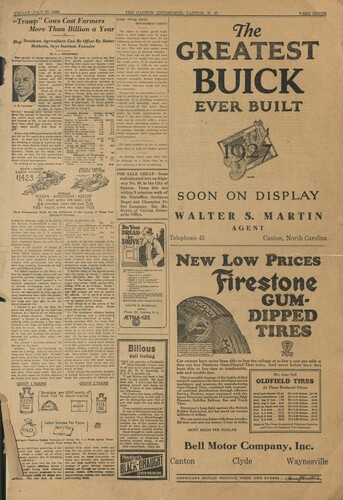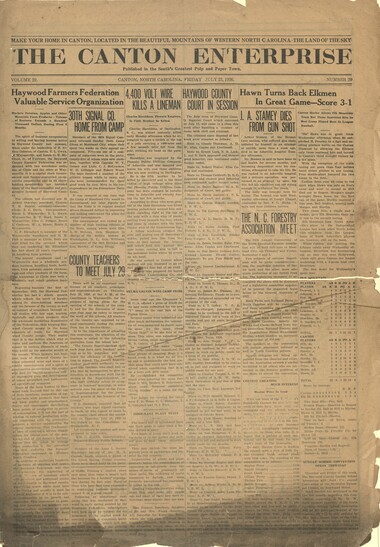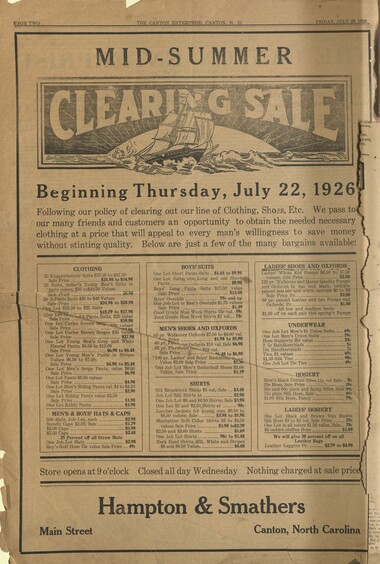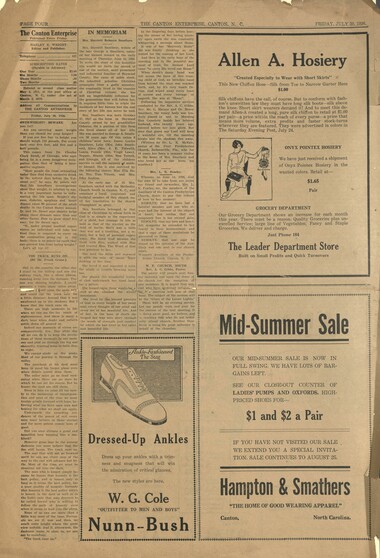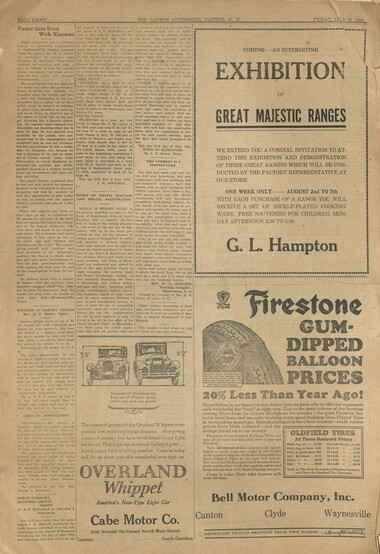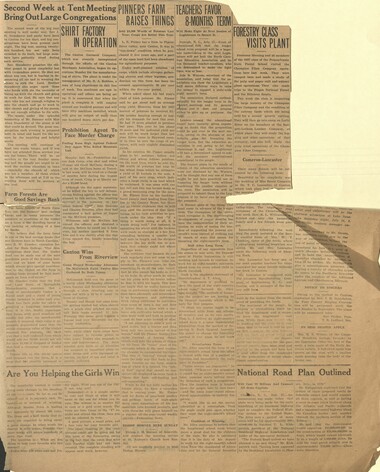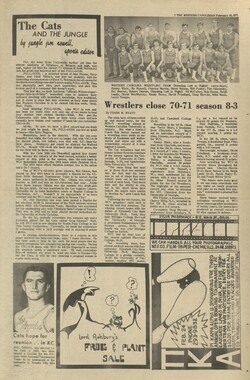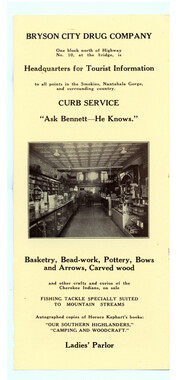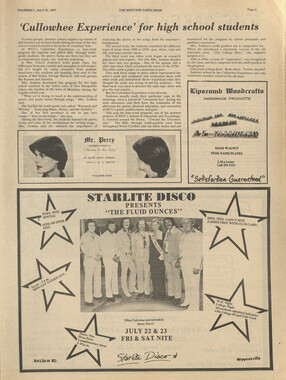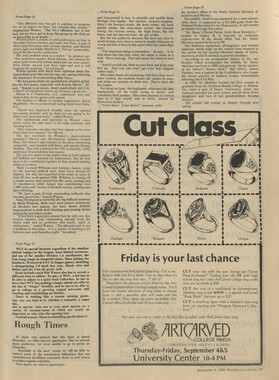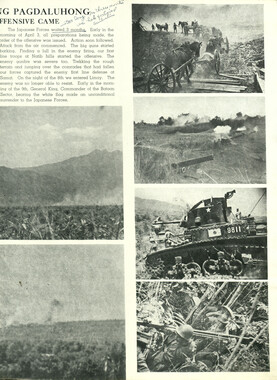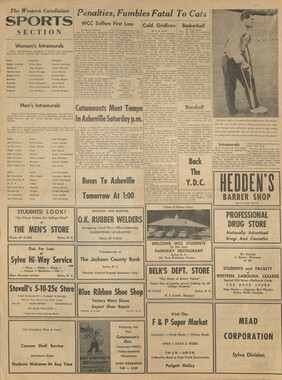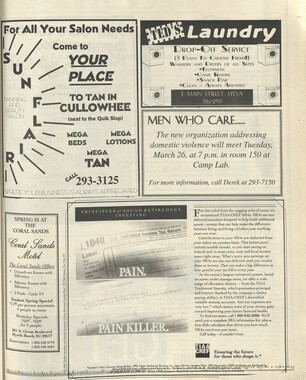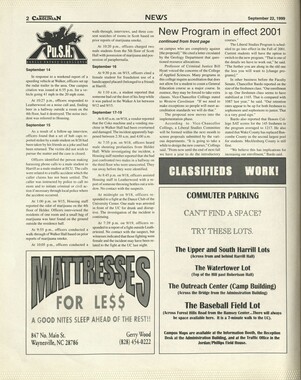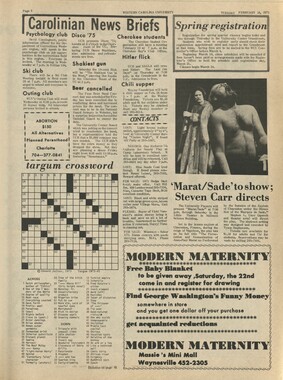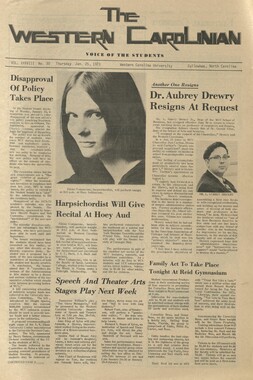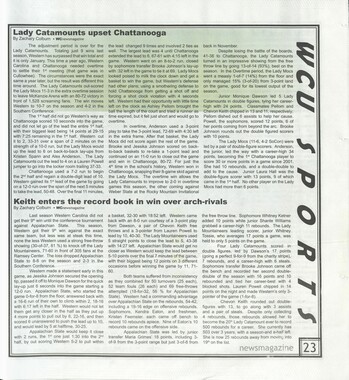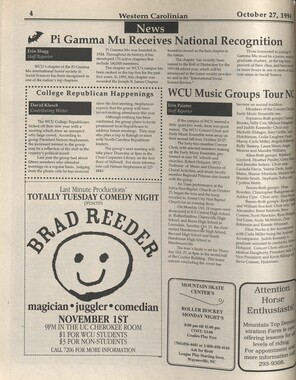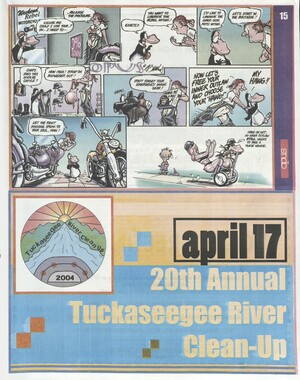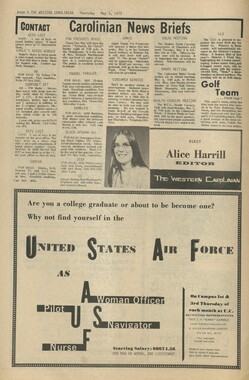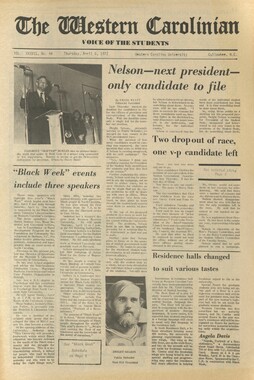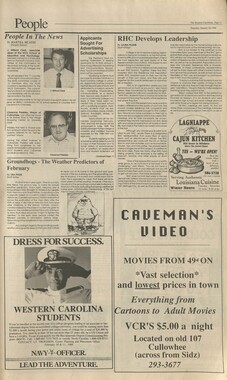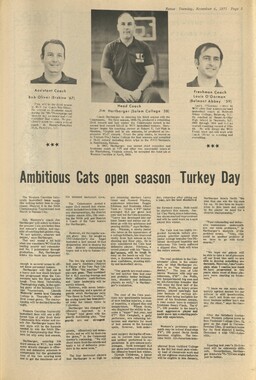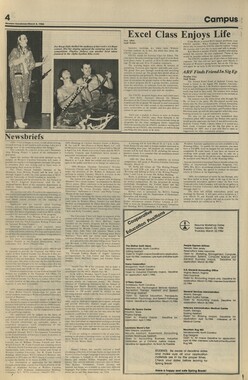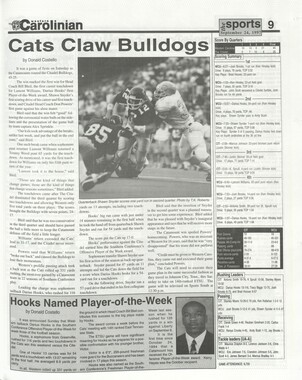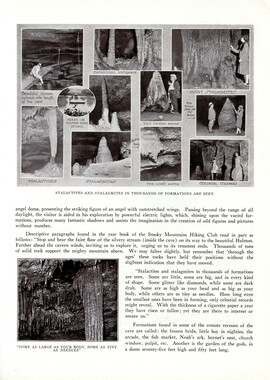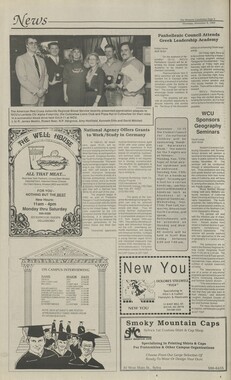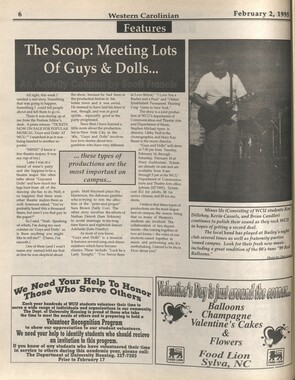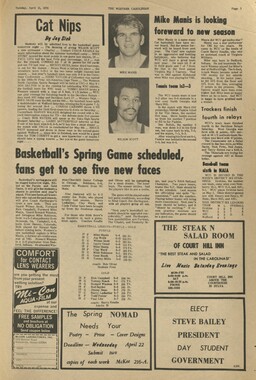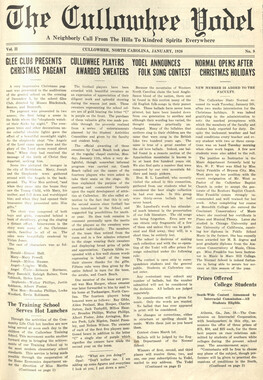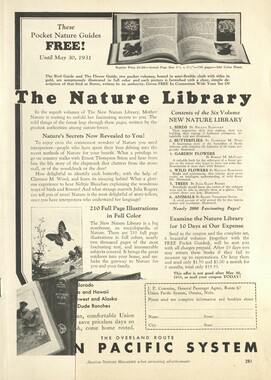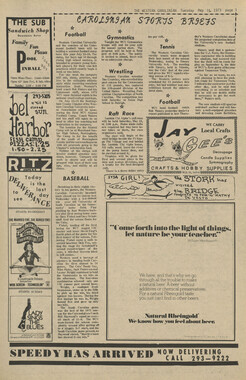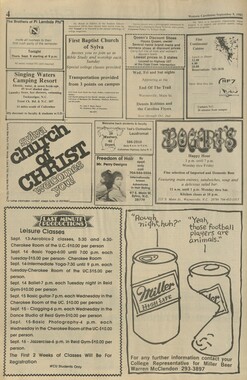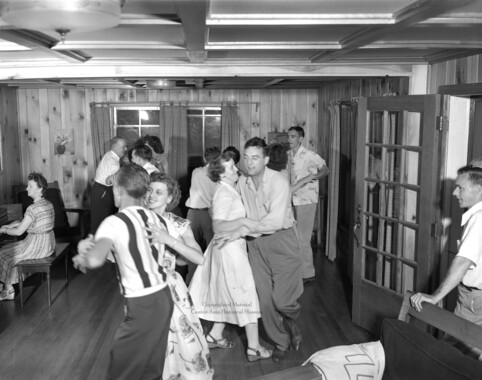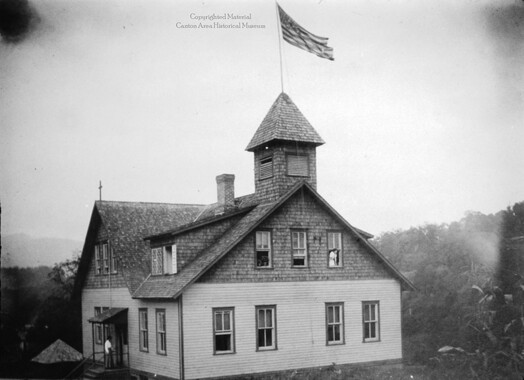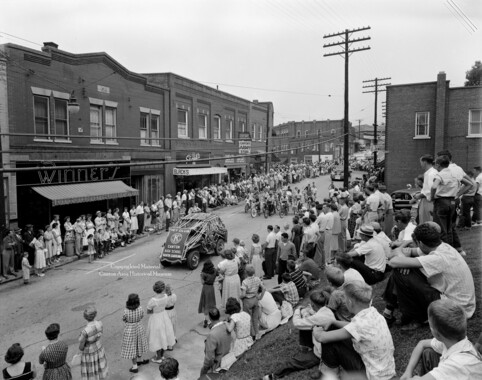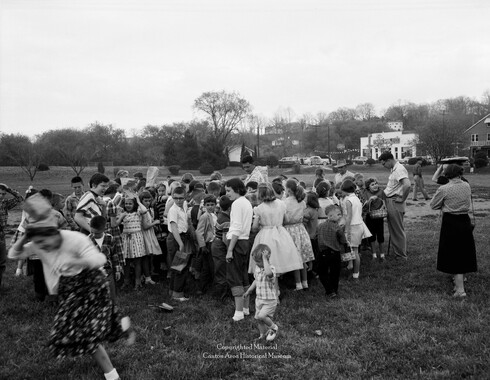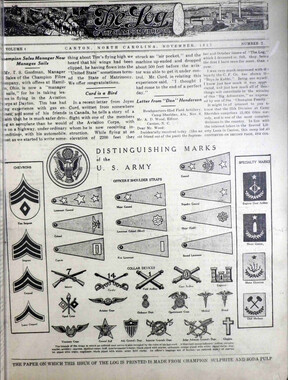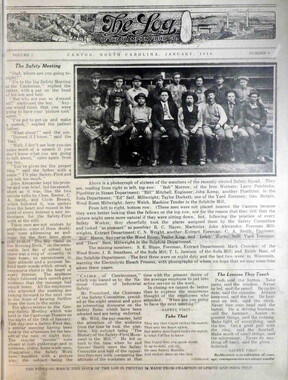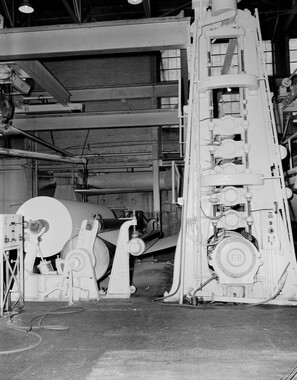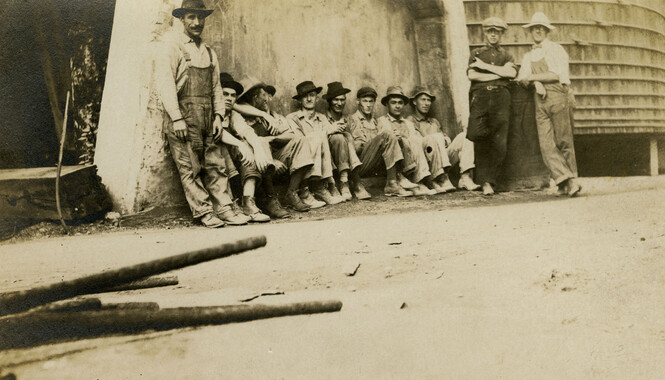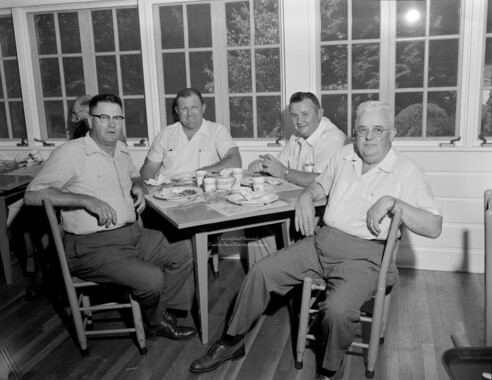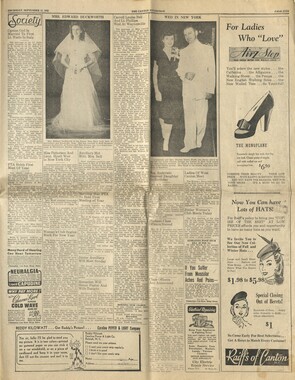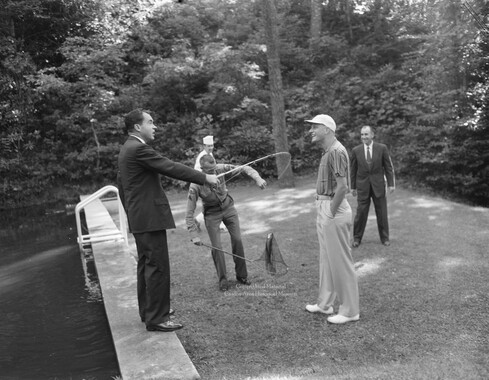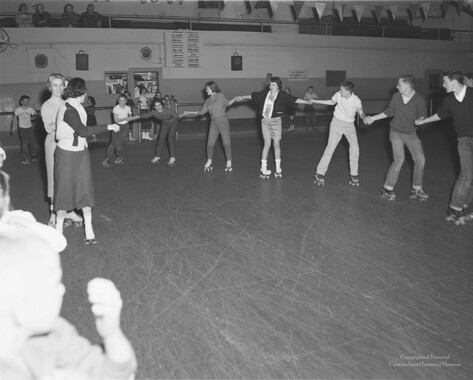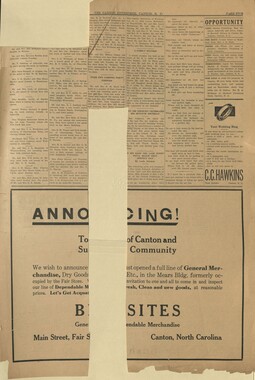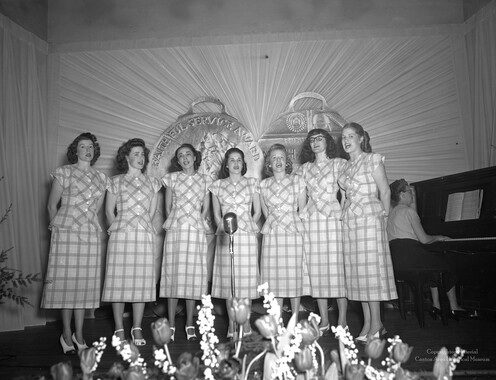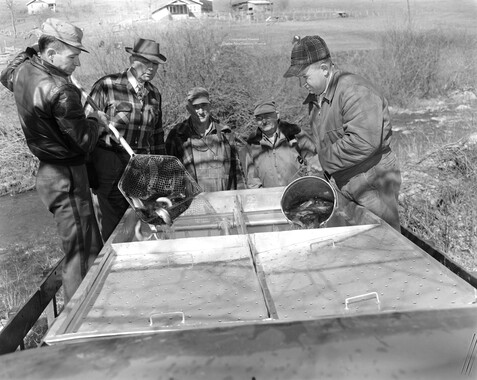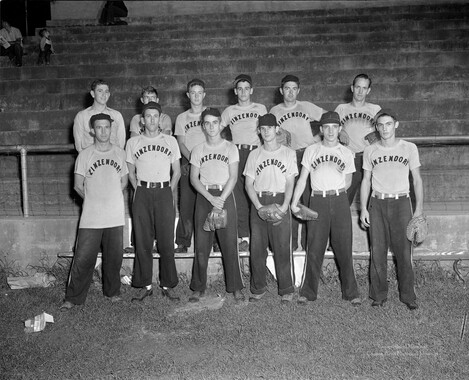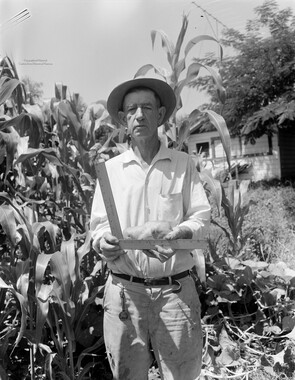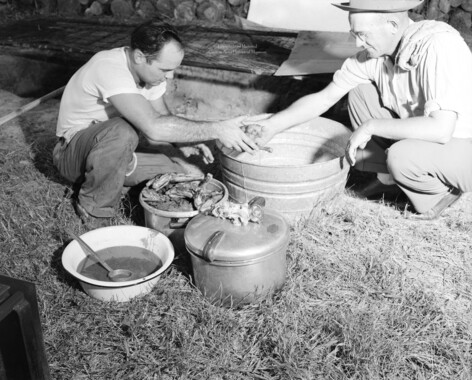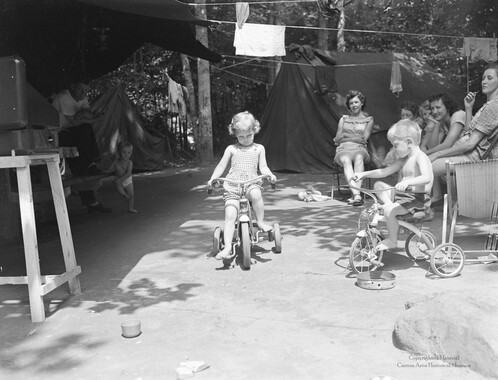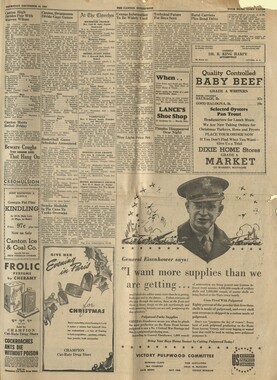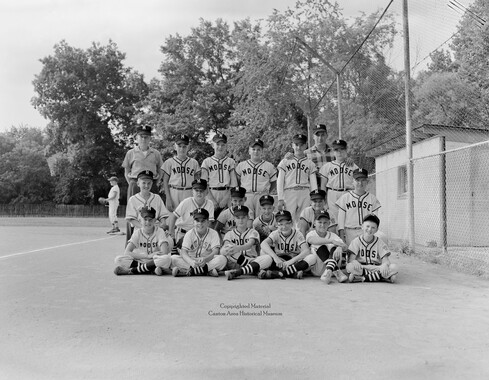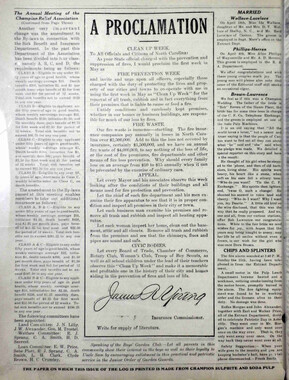Western Carolina University (20)
View all
- Canton Champion Fibre Company (2308)
- Cherokee Traditions (291)
- Civil War in Southern Appalachia (165)
- Craft Revival (1942)
- Great Smoky Mountains - A Park for America (2946)
- Highlights from Western Carolina University (430)
- Horace Kephart (941)
- Journeys Through Jackson (159)
- LGBTQIA+ Archive of Jackson County (85)
- Oral Histories of Western North Carolina (314)
- Picturing Appalachia (6873)
- Stories of Mountain Folk (413)
- Travel Western North Carolina (160)
- Western Carolina University Fine Art Museum Vitreograph Collection (129)
- Western Carolina University Herbarium (92)
- Western Carolina University: Making Memories (738)
- Western Carolina University Publications (2488)
- Western Carolina University Restricted Electronic Theses and Dissertations (146)
- Western North Carolina Regional Maps (71)
- World War II in Southern Appalachia (131)
University of North Carolina Asheville (6)
View all
- Allanstand Cottage Industries (62)
- Appalachian National Park Association (53)
- Bennett, Kelly, 1890-1974 (1463)
- Berry, Walter (76)
- Brasstown Carvers (40)
- Carver, George Washington, 1864?-1943 (26)
- Cathey, Joseph, 1803-1874 (1)
- Champion Fibre Company (233)
- Champion Paper and Fibre Company (297)
- Cherokee Indian Fair Association (16)
- Cherokee Language Program (22)
- Crowe, Amanda (40)
- Edmonston, Thomas Benton, 1842-1907 (7)
- Ensley, A. L. (Abraham Lincoln), 1865-1948 (275)
- Fromer, Irving Rhodes, 1913-1994 (70)
- George Butz (BFS 1907) (46)
- Goodrich, Frances Louisa (120)
- Grant, George Alexander, 1891-1964 (96)
- Heard, Marian Gladys (60)
- Kephart, Calvin, 1883-1969 (15)
- Kephart, Horace, 1862-1931 (313)
- Kephart, Laura, 1862-1954 (39)
- Laney, Gideon Thomas, 1889-1976 (439)
- Masa, George, 1881-1933 (61)
- McElhinney, William Julian, 1896-1953 (44)
- Niggli, Josephina, 1910-1983 (10)
- North Carolina Park Commission (105)
- Osborne, Kezia Stradley (9)
- Owens, Samuel Robert, 1918-1995 (11)
- Penland Weavers and Potters (36)
- Roberts, Vivienne (15)
- Roth, Albert, 1890-1974 (142)
- Schenck, Carl Alwin, 1868-1955 (1)
- Sherrill's Photography Studio (2565)
- Southern Highland Handicraft Guild (127)
- Southern Highlanders, Inc. (71)
- Stalcup, Jesse Bryson (46)
- Stearns, I. K. (213)
- Thompson, James Edward, 1880-1976 (226)
- United States. Indian Arts and Crafts Board (130)
- USFS (683)
- Vance, Zebulon Baird, 1830-1894 (1)
- Weaver, Zebulon, 1872-1948 (58)
- Western Carolina College (230)
- Western Carolina Teachers College (282)
- Western Carolina University (2005)
- Western Carolina University. Mountain Heritage Center (18)
- Whitman, Walt, 1819-1892 (10)
- Wilburn, Hiram Coleman, 1880-1967 (73)
- Williams, Isadora (3)
- Cain, Doreyl Ammons (0)
- Crittenden, Lorraine (0)
- Rhodes, Judy (0)
- Smith, Edward Clark (0)
- Appalachian Region, Southern (2569)
- Asheville (N.C.) (1923)
- Avery County (N.C.) (26)
- Blount County (Tenn.) (195)
- Buncombe County (N.C.) (1672)
- Cherokee County (N.C.) (283)
- Clay County (N.C.) (555)
- Graham County (N.C.) (236)
- Great Smoky Mountains National Park (N.C. and Tenn.) (519)
- Haywood County (N.C.) (3569)
- Henderson County (N.C.) (70)
- Jackson County (N.C.) (4909)
- Knox County (Tenn.) (35)
- Knoxville (Tenn.) (13)
- Lake Santeetlah (N.C.) (10)
- Macon County (N.C.) (420)
- Madison County (N.C.) (215)
- McDowell County (N.C.) (39)
- Mitchell County (N.C.) (132)
- Polk County (N.C.) (35)
- Qualla Boundary (982)
- Rutherford County (N.C.) (76)
- Swain County (N.C.) (2182)
- Transylvania County (N.C.) (270)
- Watauga County (N.C.) (12)
- Waynesville (N.C.) (86)
- Yancey County (N.C.) (72)
- Aerial Photographs (3)
- Aerial Views (60)
- Albums (books) (4)
- Articles (1)
- Artifacts (object Genre) (228)
- Bibliographies (1)
- Biography (general Genre) (2)
- Cards (information Artifacts) (38)
- Clippings (information Artifacts) (191)
- Copybooks (instructional Materials) (3)
- Crafts (art Genres) (622)
- Depictions (visual Works) (21)
- Design Drawings (1)
- Drawings (visual Works) (185)
- Envelopes (73)
- Exhibitions (events) (1)
- Facsimiles (reproductions) (1)
- Fiction (general Genre) (4)
- Financial Records (12)
- Fliers (printed Matter) (67)
- Glass Plate Negatives (381)
- Guidebooks (2)
- Internegatives (10)
- Interviews (815)
- Land Surveys (102)
- Letters (correspondence) (1013)
- Manuscripts (documents) (618)
- Maps (documents) (177)
- Memorandums (25)
- Minutes (administrative Records) (59)
- Negatives (photographs) (6090)
- Newsletters (1290)
- Newspapers (2)
- Notebooks (8)
- Occupation Currency (1)
- Paintings (visual Works) (1)
- Pen And Ink Drawings (1)
- Periodicals (193)
- Personal Narratives (10)
- Photographs (12976)
- Plans (maps) (1)
- Poetry (5)
- Portraits (4568)
- Postcards (329)
- Programs (documents) (181)
- Publications (documents) (2440)
- Questionnaires (65)
- Relief Prints (26)
- Sayings (literary Genre) (1)
- Scrapbooks (282)
- Sheet Music (2)
- Slides (photographs) (402)
- Songs (musical Compositions) (2)
- Sound Recordings (796)
- Specimens (92)
- Speeches (documents) (18)
- Tintypes (photographs) (8)
- Transcripts (322)
- Video Recordings (physical Artifacts) (23)
- Text Messages (0)
- A.L. Ensley Collection (275)
- Appalachian Industrial School Records (7)
- Appalachian National Park Association Records (336)
- Axley-Meroney Collection (2)
- Bayard Wootten Photograph Collection (20)
- Bethel Rural Community Organization Collection (7)
- Blumer Collection (5)
- C.W. Slagle Collection (20)
- Canton Area Historical Museum (2110)
- Carlos C. Campbell Collection (462)
- Cataloochee History Project (64)
- Cherokee Studies Collection (4)
- Daisy Dame Photograph Album (5)
- Daniel Boone VI Collection (1)
- Doris Ulmann Photograph Collection (112)
- Elizabeth H. Lasley Collection (1)
- Elizabeth Woolworth Szold Fleharty Collection (4)
- Frank Fry Collection (95)
- George Masa Collection (173)
- Gideon Laney Collection (452)
- Hazel Scarborough Collection (2)
- Hiram C. Wilburn Papers (28)
- Historic Photographs Collection (236)
- Horace Kephart Collection (861)
- Humbard Collection (33)
- Hunter and Weaver Families Collection (1)
- I. D. Blumenthal Collection (4)
- Isadora Williams Collection (4)
- Jesse Bryson Stalcup Collection (47)
- Jim Thompson Collection (224)
- John B. Battle Collection (7)
- John C. Campbell Folk School Records (80)
- John Parris Collection (6)
- Judaculla Rock project (2)
- Kelly Bennett Collection (1482)
- Love Family Papers (11)
- Major Wiley Parris Civil War Letters (3)
- Map Collection (12)
- McFee-Misemer Civil War Letters (34)
- Mountain Heritage Center Collection (4)
- Norburn - Robertson - Thomson Families Collection (44)
- Pauline Hood Collection (7)
- Pre-Guild Collection (2)
- Qualla Arts and Crafts Mutual Collection (12)
- R.A. Romanes Collection (681)
- Rosser H. Taylor Collection (1)
- Samuel Robert Owens Collection (94)
- Sara Madison Collection (144)
- Sherrill Studio Photo Collection (2558)
- Smoky Mountains Hiking Club Collection (616)
- Stories of Mountain Folk - Radio Programs (374)
- The Reporter, Western Carolina University (510)
- Venoy and Elizabeth Reed Collection (16)
- WCU Gender and Sexuality Oral History Project (32)
- WCU Mountain Heritage Center Oral Histories (25)
- WCU Oral History Collection - Mountain People, Mountain Lives (71)
- WCU Students Newspapers Collection (1920)
- Western North Carolina Tomorrow Black Oral History Project (69)
- William Williams Stringfield Collection (2)
- Zebulon Weaver Collection (109)
- African Americans (390)
- Appalachian Trail (35)
- Artisans (521)
- Cherokee art (84)
- Cherokee artists -- North Carolina (10)
- Cherokee language (21)
- Cherokee pottery (101)
- Cherokee women (208)
- Church buildings (189)
- Civilian Conservation Corps (U.S.) (111)
- College student newspapers and periodicals (2009)
- Dams (107)
- Dance (1023)
- Education (222)
- Floods (61)
- Folk music (1015)
- Forced removal, 1813-1903 (2)
- Forest conservation (220)
- Forests and forestry (1184)
- Gender nonconformity (4)
- Great Smoky Mountains National Park (N.C. and Tenn.) (181)
- Hunting (45)
- Landscape photography (25)
- Logging (119)
- Maps (83)
- Mines and mineral resources (8)
- North Carolina -- Maps (18)
- Paper industry (38)
- Postcards (255)
- Pottery (135)
- Railroad trains (72)
- Rural electrification -- North Carolina, Western (3)
- School integration -- Southern States (2)
- Segregation -- North Carolina, Western (5)
- Slavery (5)
- Sports (452)
- Storytelling (243)
- Waterfalls -- Great Smoky Mountains (N.C. and Tenn.) (66)
- Weaving -- Appalachian Region, Southern (280)
- Wood-carving -- Appalachian Region, Southern (328)
- World War, 1939-1945 (173)
The Canton Enterprise Volume 22 Number 29
Item
Item’s are ‘child’ level descriptions to ‘parent’ objects, (e.g. one page of a whole book).
-
-
FRTDAY. JULY 23, 1926., THE CANTON ENTERPRISE. CANTON. N. C. PAGE SEVEN "Tramp99 Cows Cost Farmers More Than Billion a Year MAKE TOTAL ROAD INVESTMENT COUNT Hug Drain on Agriculture Can Be Offset By Better Methods, Says Institute Founder / ByLJ. BROSEMER / Two groups of farms represent an average business Investment of $23,0tX) per farm. One J. E. Larrowe group showed a yearly labor Income of $1,423. The other group cleared only $95 labor Income for twelve months' hard work. What all of us with money Invested In land, animals and crops want in goodly measure, year after year, Is "lubor Income," because labor Income represents the amount of earnings left for one year's work after all expenses and Interest at 5% on our investment have been taken into account. If we caja't make money, why farm at all? ■' Quite a big difference between $1,423 and $95 as the result of a whole year's work! At least that Is how It struck me, listening to James E. Larrowe outline the three factors which are keeping down profits in America's greatest Industry. These are the waste, not the cost, of feed, the low production per animal, and the waste of time because of poor management Or, looking at the same picture from CROUP 1 FARMS jLABOR INCOME tables did more to convince me that farm profits depend upon efficient feeding than hare any figure* 1 bad ever seen In this age of statistics and nation of statisticians. These data are worth a good many hundred dollars to any thinking farmer keen enough to learn the lesson they teach. In the table are given "pictures in figures" of what resulted from a year's work on two large groups of farms. In the very first line Is shown the last thing a farmer finds out—his yeurly labor Income. The farmers In Group 1 make $1,423 labor Income. That sum Is practicallr 15 times greater than the labor Income made by the farmers In Group 2. Average factor* droop 1 Labor Income \ 1,4 23 91b* ▼«. latenmity. Capital Investment $25,654 lOt H423 Acre* In farm Crop acrei In farm 86 Number of men 1.8 Number of cows 11.8 Number of cows per man 6.4 Units of livestock 14.8 Hours of productive work 8.110 Crop lores per man 48 Hours of productive WPIJJ per man..'.TT7T 178 Per cent total crop and »*, s^ock receipts from livestock 6T Efficiency of Production. Value of land per acre.l 202 Value of cows per head 98 Crop Index (average Is 1007.) 122% GROUP 2 FARMS LABOR INCOME Oress S } 95 $23,550 137 100 1.6 8.9 6.6 12.6 8,720 62 The move to widen paved highways is well under way in many states. Contracts have been let for widening portions of the paved road on the famous Pacific Highway, to 30 feet. This will give ample room I for three lincv of moving vehicles. ■ Ten years ago no one would have dreamed of the trathe that goes over the roads today. It is impossible to predict whai it will be ten years hence. If the railroads go into the motor truck and motor bus business on an extensive scale as now seems entirely probable, 30-foot highways will be entirely Inadequate to handle the traffic. One-way roads will then he a necessity. Oregon has an unexcelled road sys- ' Icin in addition to its paved trunk, j highways. It is building wonderful crushed rock macadam roads into every section of the state. These roads are established on a permanent grade. As traffic requirements demand it. this base which carries the load, can be covered with a waterproof, shock absorbing surface of a bituminous character, at a minimum of expense, thereby utilizing every dollar taxpayers have expended for road purposes. MO «0 149 110 •»% It's more sensible to try to reduce costs than to wish for higher prices. At bottom, every man feels that I he belongs on a farm—that he is just enjoying a leave of absence. •°&g^lM§& AVERAGE $25,654- - INVESTMENT- $23,550 86 - CROP ACRES PER FARM - 100 6.4 "NUMBER COWS PER MAN "5.6 $96- VALUE COWS PER HEAD - f 110 Good Management Made All the Difference In the Income of These Two Groups of Farmers. FOR SALE CHEAP—Some well-situated lots on Highway No. 10, in the City of Canton. These lots are within 5 minutes walk of the Postofflce, Southern Depot and Champion Fibre Company. See Mr. Keyes at Canton Enterprise Office. a slightly different angle, It is costing our farmers $1,200,000,000 a year in feed, labor and overhead expense to keep the 12,000,000 tramp cows that produce less than the U. S. average milk production per cow. And none of these tremendous losses will be stopped until American farms are put on a business basis. That is the opinion of James 13. Larrowe, a successful business man whose clearly defined Ideas on farming are the result of facts, proven on his noted Larro Research Farm and coupled with government and state field data covering thousands at eastern and southern farms. We talked together In his office, visited his research fartne, questioned the nutrition experts, former college professors, fact and detail hunters In his recently organised Larrowe Institute of Animal Economics, and I was amazed to learn how closely Interwoven the businesses of milk, egg and meat production were with the general business structure of th« nation, and the large part they play in our national economic life. I wanted to get into the data, reports and charts used by the Institute workers, so I started at the beginning with a simple question. "Sup-pose," 1 asked, "a farmer is making a living milking cows, producing a few eggs, feeding a few hogs and growing crops to feed his stock. He feels his cows ought to make more profit. What can he do that will increase his profits— Increase his profits right away, not next year?" The answer I received certainly hit the nail on the head. Answer: "You are depending on cows for a living. Milk at low cost is what you want. Very well. It takes good cows, good hay and a good grain ration to make money. You can't buy better cows, unless you have the money. You can't breed a new generation of better cows from the ones you have. That takes years. But you can, in four cases out of five, improve •r change your grain ration, feed each GROUP 1 FARMS Pounds of butterfat per cow 249 207 Economy and Efficiency of Feeding. Feed per unit livestock t 103 f 119 Receipts per $100 fed livestock 171 101 Receipts per $100 fed dairy cattle 225 US A study of the two columns of figures shows that there was ouly a Small difference In the average capital invested in tlie two groups of farms. More Intensive farming was prsrcl by the farmers In Group 1—they had more livestock and more cows per farmer, per acre and per man. Their enterprises made possible more houre of productive work per farm. A farther study of the figures shows that the farms In Group 1 produced more efficiently than did tlwse In Group 2. The Group 1 farms produced larger crop yi«W»—122% against 89%, basing 100% as an average. Group 1 farms produced n*we butterfat per cow—449 pounds per cow as against 207 pounds. Or, to pot tt to terms of milk, approximately 7,114 pounds per cow ae against 5,014 pounds. That brings us to the points of tine lesson worth nailing down. These points are as follows: (1) The intelligent, efficient feeding —good roughage plus a milk-making grain ration—practiced on Group 1 farms, returned $225 for every $100 worth of feed fed dairy cattle. (2) On the other farms only about, half as much, or to lie exact, only $118 was returned out of every $100 worth of feed. (3) On one group of farms the crops of 8G aci-es plus purchased concentrates show a yearly labor Income of $1,423—primarily because more In- telligf-nt feeding resulted in receipts of $225 from over $100 worth of roughage, farm-grown grains and purchased concentrates (4) The other group cleared only $95 labor Income for 12 months' hard work, and had receipts of only $118 from every $100 worth of feed. Little wonder the Larrowe Institute of Animal Economics was founded to study the economics of efficient pro- GROUP 2 FARMS "P VERY time you take out your car, *-~* do you worry—■ "What if it is stolen?" "Suppose it burns?" "Might I injure somebody?" "The car may be ruined in a crash." "What if I damage property of others?" "Maybe I'll get hurt." All of these insurable motoring hazards are covered by /Etna Six Point Automobile Protection. ^ETNA-IZE—Don't Dread To Drive. KALPH D. RANDALL Agent Phone 204 Canton, N. G /ETNA-IZE mf Receipts per 1100 worth, of, ( feed fed to dairy cattle f J Labor Income Per Farm } felligent Feedlna Netted Farmers of Group No. 1 a Profit Seven Times Greater Than Group No. 2. iB an Individual according to her iictlon and stwt making more within a week," all of which erely another way of stressing efficiency. d not gone wry far tnto the if animal e&Vtency before I tiyMtf facing farts obtained plal source* pvqsjeatod to two ranged tabi* for DQtfte •oro parlsons. The new data in these ductlon from dairy cows, fowls ana hog3 for this nation of milk, egg and pork eaters. We farmers need it. We waste land, we waste man-power, we waste hay, fertility and machinery. But our moat appalling waste is our wastage of grain thiwngh Improper feeding and throat* ear f allwe to use pneven, touted, mflh- making ratWu*, egg-prodnclng maisbM, and eaonomical pork-making feeds. Bilious dull feeling' "MY old 8tand_by " Thedfbrd's Black-Draught—I have used it off and on for about 20 years," says Mr. W. S. Reynolds, of R. F. D. 2, Arcadia, La. "I get bilious and have a bad taste in my mouth. My head feels dull I don't just feel like getting around and doing my work. I know it isnt laziness, but biliousness. "So I take a few doses of Black- Draught and when it acts well, I get up feeling like new—full of pep' and ready for any kind of work "I can certainly recommend it" In case of biliousness and other disagreeable conditions due to an inactive liver, Black-Draught helps to drive the poisonous impurities out of the system and tends to leave the organs in a state of normal, healthy activity. Black-Draught is made entirely of pure medicinal roots and herbs and contains no dangerous or harmful mineral drugs. It can be safely taken by everyone. Sold everywhere. Price 25c. s ! ■■■■■■■■■■■a The GREATEST BUICK EVER. BUILT SOON ON DISPLAY WALTER S. MARTIN AGENT Telephone 45 Canton, North Carolina New Low Prices irestone DIPPED TIRES Cut-away section of Gum • Dij, Balloon showing magnified cord untwisted into fifteen smaller cords, composed of many tittle fibers, all thoroughly saturated and insulated with rubber by Gum-Dipping. Car owners have never been able to buy tire mileage at so low a cost per mile a; they can buy Firestone Gum-Dipped Tires today. And never before have the^ been able to buy tires so comfortable, safe and trouble free. This is possible because of the highly skilled research engineers who have developed special machinery and processes for manufacturing Gum-Dipped Tires, combined with economical national distribution through efficient Service Dealers, many equipped with the latest Firestone methods of repairing High Pressure, Full-Size Balloon, Bus and Truck Tires. Firestone's long fight against the British Rubber Restriction Act has saved car owners millions of dollars. We can serve you better with these wonderful tires and save you money. Come in today. MOST MILES PER DOLLAR We Also Sell OLDFIELD TIRES At These Reduced Prices 30x3 Fabric Cllnoher.C6.90 29x4.40 Balloon. $11.20 30x3% Fabric Clincher. 7.80 29x4.75 Balloon.. .14.90 30x3 Re*. CI. Cord... 7.70 30 x 4.75 Balloon.. .15.60 30x3% Re*. CI. Cord. . .8.95 29 x 4.95 Balloon... 16.45 10x3% Ex. Size CI. Cord. 9.95 30x4.95 Balloon.. .17.25 31x4 S.S.Cord 15.75 30 x 5.25 Balloon.. .18.15 32x4 S.S.Cord 17.25 31 x 5.25 Balloon.. .19.05 32x4%S. S. Cord 23.35 32x6.00 Balloon.. .22.95 33x5 S. S. Cord 29.60 33 x 6.00 Balloon.. .24.10 Made in The Great Economical Firestone Factories and Carry the Standard Tire Guarantee Bell Motor Company, Inc. Canton Clyde Waynesville AMERICANS SHOULD PRODUCE THEIR OWN RUBBER . . \J^^J^kukX^S^
Object
Object’s are ‘parent’ level descriptions to ‘children’ items, (e.g. a book with pages).
-
The Canton Enterprise (19??–1971) was published in Canton, North Carolina by the Canton Publishing Company. Its preceding title was The Canton Observer (circa 1900-), and succeeding title was The Enterprise (1971-1996).
-

